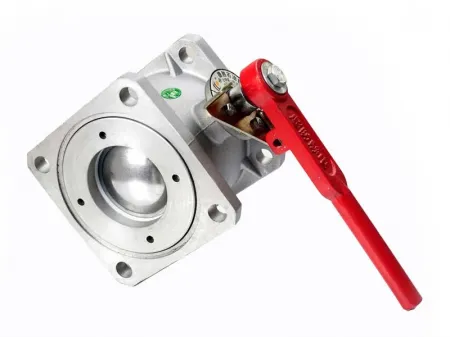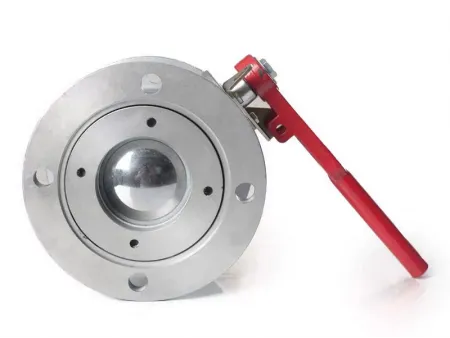Discharge Ball Valve
Tank Truck Valves
Tank truck ball valves for flow control of liquid, gas and slurry
- Nominal diameter: 2''/2.5''/3''/4''/6''
- Nominal pressure: 0.6MPa
- Seal material: PTFE
- Material: Aluminum alloy
- Installation: Flange
- Temperature range: -40℃ to 70℃
The discharge ball valve is a flow control component used on tank trucks and industrial pipelines to regulate the movement of liquids, gases, and slurries. Designed for reliable shut-off and ease of operation, it is suitable for demanding environments in fuel transport, chemical processing, gas distribution, and water management systems.
Our ball valve consists of a valve body, rotating ball, valve stem, and sealing elements. When the internal ball’s bore aligns with the pipe axis, fluid flows freely through the valve. A 90-degree rotation blocks the flow, effectively isolating the system. Its simple mechanism ensures low torque operation, high sealing reliability, and long service life.
The discharge ball valve is available in multiple sizes and materials to accommodate various media types and working pressures, making it a versatile solution for mobile and stationary flow systems.
- Excellent sealing performance between the ball and valve seat prevents leakage, ideal for systems with high sealing requirements
- Quarter-turn operation (90° rotation) enables quick, effortless opening and closing
- Full-bore design allows for unobstructed flow, minimizing pressure loss and maximizing throughput




